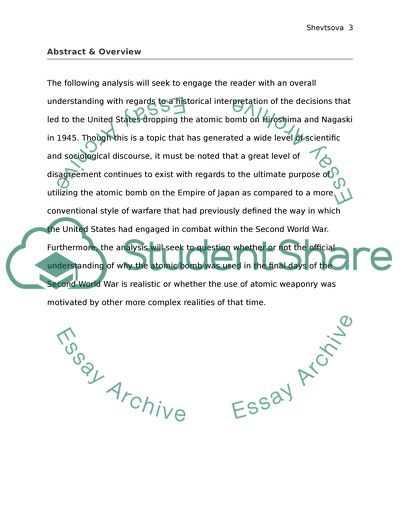Cite this document
(“Hiroshima and Nagasaki: The Terrible Truth behind a Shocking Decision Research Paper”, n.d.)
Hiroshima and Nagasaki: The Terrible Truth behind a Shocking Decision Research Paper. Retrieved from https://studentshare.org/history/1477748-the-motivation-behind-dropping-the-atomic-bombs-on
Hiroshima and Nagasaki: The Terrible Truth behind a Shocking Decision Research Paper. Retrieved from https://studentshare.org/history/1477748-the-motivation-behind-dropping-the-atomic-bombs-on
(Hiroshima and Nagasaki: The Terrible Truth Behind a Shocking Decision Research Paper)
Hiroshima and Nagasaki: The Terrible Truth Behind a Shocking Decision Research Paper. https://studentshare.org/history/1477748-the-motivation-behind-dropping-the-atomic-bombs-on.
Hiroshima and Nagasaki: The Terrible Truth Behind a Shocking Decision Research Paper. https://studentshare.org/history/1477748-the-motivation-behind-dropping-the-atomic-bombs-on.
“Hiroshima and Nagasaki: The Terrible Truth Behind a Shocking Decision Research Paper”, n.d. https://studentshare.org/history/1477748-the-motivation-behind-dropping-the-atomic-bombs-on.


